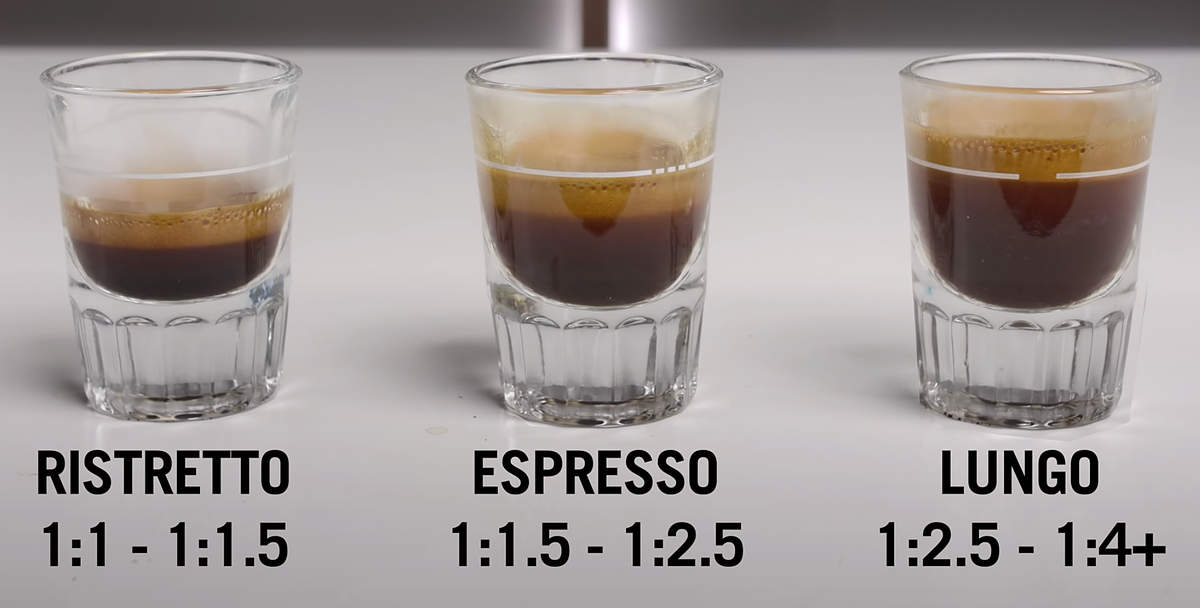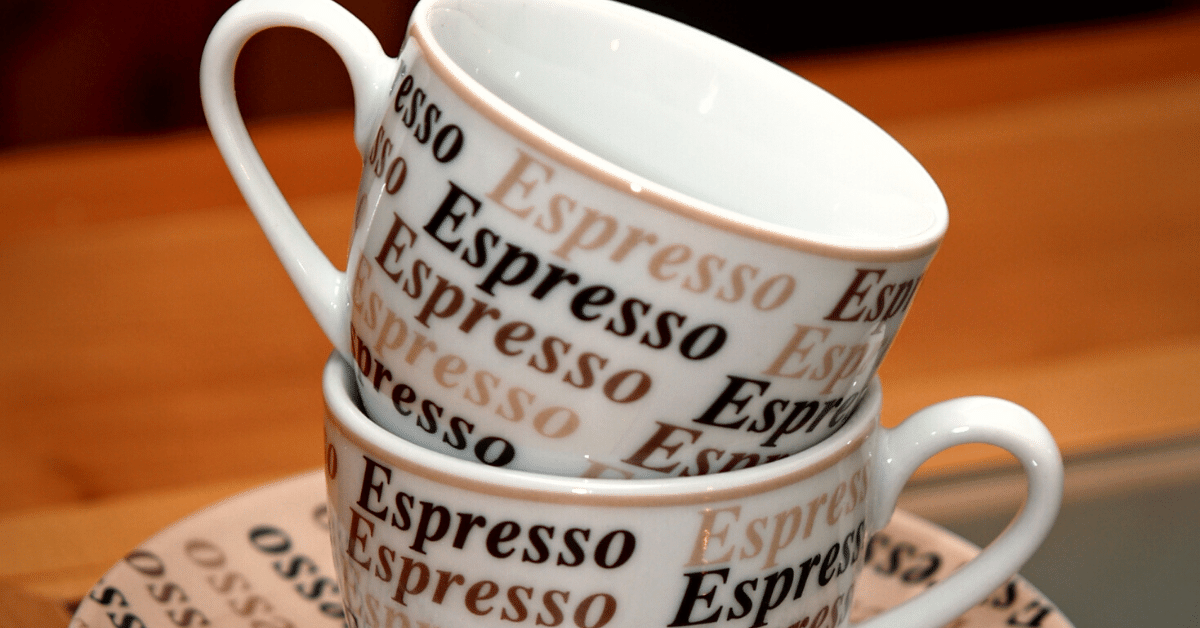Mastering Espresso Size: A Coffee Lover's Ultimate Guide
Ever wondered why your morning espresso tastes so different depending on its size? Well, let’s dive into the world of espresso sizes and uncover the secrets behind this beloved coffee beverage. If you’re a coffee enthusiast, understanding espresso size is crucial for crafting that perfect cup. Whether you’re sipping a ristretto, a standard espresso, or a lungo, each variation brings its own unique flavor profile and caffeine kick.
Espresso isn’t just a coffee drink—it’s an art form. From the moment the hot water hits the finely ground coffee beans, a symphony of flavors begins to unfold. But here’s the kicker: the size of your espresso can drastically alter its taste, aroma, and intensity. So, if you’re curious about how espresso size affects your daily brew, you’re in the right place.
In this guide, we’ll explore everything you need to know about espresso size. We’ll break down the differences between various espresso types, offer tips for brewing the perfect shot, and even discuss how to choose the best size for your mood or occasion. So grab your favorite mug, and let’s get started!
Read also:Discover Diana Ross Net Worth Age And Personal Life 2023
Understanding the Basics of Espresso Size
Let’s kick things off with the fundamentals. Espresso size isn’t just about how much liquid you’re getting in your cup. It’s about the balance of flavors, the strength of the brew, and how it fits into your coffee routine. Here’s a quick rundown:
- Ristretto: A short, concentrated shot packed with bold flavors.
- Espresso: The classic shot that strikes a balance between intensity and drinkability.
- Lungo: A longer pull that brings out more subtle notes and a milder taste.
Each of these sizes has its own personality, and choosing the right one depends on your personal preference and the kind of coffee experience you’re after.
What Makes Espresso Size So Important?
Think of espresso size as the backbone of your coffee journey. The size determines how much water passes through the coffee grounds, which in turn affects the extraction process. Extraction is where all the magic happens—this is when the flavors, oils, and caffeine from the coffee beans are pulled into your cup.
If you go too short, you might end up with an overly intense and bitter shot. Too long, and you risk diluting the flavors, leaving you with a watery brew. Finding that sweet spot is key to enjoying the perfect espresso every time.
Breaking Down the Extraction Process
Extraction is the science behind the art of espresso. Here’s how it works:
- Water is forced through finely ground coffee under pressure.
- The water absorbs the soluble compounds from the coffee beans.
- The result is a concentrated liquid full of flavor and caffeine.
The size of your espresso shot directly impacts how much of these compounds are extracted, making it a crucial factor in the final taste of your coffee.
Read also:Kaylee Hartungs Journey Through Eye Surgery A Comprehensive Guide
Types of Espresso Shots Explained
Now that we’ve covered the basics, let’s dive deeper into the different types of espresso shots. Each one has its own characteristics and is suited to different tastes and occasions.
Ristretto: The Short and Sweet
Ristretto is the espresso shot for those who love intensity. It’s a shorter pull, meaning less water passes through the coffee grounds. The result? A highly concentrated shot with bold flavors and a strong kick. If you’re into dark, rich coffee, ristretto might just become your new favorite.
Espresso: The Gold Standard
Espresso is what most people think of when they hear the word "espresso." It’s the perfect balance between strength and drinkability. A standard espresso shot is typically around 30ml, making it the go-to choice for many coffee lovers. It’s versatile too—you can enjoy it on its own or use it as the base for other drinks like lattes or cappuccinos.
Lungo: The Gentle Giant
Lungo is the opposite of ristretto. It’s a longer pull, meaning more water passes through the coffee grounds. This results in a milder, less intense flavor profile. If you prefer a gentler coffee experience, lungo is worth a try. It’s also great for those who want to savor their coffee over a longer period.
Factors Affecting Espresso Size
Several factors influence the size of your espresso shot. Let’s take a closer look:
- Coffee Grind: Finer grinds slow down the extraction process, resulting in a stronger shot. Coarser grinds speed it up, leading to a milder flavor.
- Water Temperature: Water that’s too hot can burn the coffee, while water that’s too cold won’t extract enough flavor.
- Tamping Pressure: How firmly you tamp the coffee grounds affects how water flows through them. Too loose, and the shot will be weak. Too tight, and it might be too strong.
Mastering these factors is key to brewing the perfect espresso shot, no matter the size.
How to Choose the Right Espresso Size
Selecting the right espresso size depends on a few things. Consider the following:
Your Mood and Energy Levels
Feeling tired? A ristretto might give you that quick caffeine boost you need. Need something to sip on during a long meeting? A lungo could be the way to go. Understanding how different sizes affect your energy levels can help you make the best choice.
The Time of Day
Morning coffee preferences might differ from evening ones. A strong espresso in the morning can wake you up, while a milder lungo in the afternoon keeps you going without overdoing it.
Your Taste Preferences
Ultimately, it comes down to what you enjoy. Some people love the boldness of a ristretto, while others prefer the milder notes of a lungo. Experiment with different sizes to find what suits your palate best.
Tips for Brewing the Perfect Espresso
Now that you know all about espresso size, here are some tips to help you brew the perfect shot:
- Use fresh, high-quality coffee beans for the best flavor.
- Grind your coffee just before brewing to preserve its aroma.
- Experiment with different grind sizes to find the perfect extraction.
- Keep your equipment clean to avoid any unwanted flavors.
Remember, practice makes perfect. The more you experiment with different variables, the better you’ll get at brewing that perfect espresso shot.
The Science Behind Espresso Size
Espresso size isn’t just about taste—it’s also about chemistry. The size of your shot affects the chemical compounds that are extracted from the coffee beans. Here’s a quick look at the science:
Acidity: Shorter shots tend to have higher acidity, which can add brightness to the flavor profile. Longer shots, on the other hand, might be more balanced but with less acidity.
Bitterness: Over-extraction can lead to bitterness, which is why controlling the size of your shot is so important. Too much water passing through the coffee can pull out unwanted compounds.
Body: The size of your shot also affects the body of the coffee. Ristrettos have a thicker, more syrupy texture, while lungos are lighter and more watery.
Common Mistakes to Avoid
Even the most experienced baristas make mistakes sometimes. Here are a few common ones to watch out for:
- Over-Tamping: Pressing the coffee grounds too hard can slow down the extraction process, leading to a weaker shot.
- Under-Grinding: Using coffee that’s too finely ground can cause over-extraction, resulting in a bitter taste.
- Incorrect Water Temperature: Water that’s too hot or too cold can ruin the flavor of your espresso.
By avoiding these mistakes, you’ll be well on your way to becoming an espresso master.
Conclusion: Elevate Your Coffee Game
In conclusion, understanding espresso size is essential for anyone serious about coffee. Whether you prefer the boldness of a ristretto, the balance of a standard espresso, or the gentleness of a lungo, there’s a perfect size for every coffee lover. By mastering the basics, experimenting with different variables, and paying attention to the science behind the process, you can elevate your coffee game to new heights.
So, what are you waiting for? Grab your espresso machine, pick your favorite beans, and start exploring the world of espresso sizes today. And don’t forget to share your experiences and tips in the comments below. Happy brewing!
Table of Contents
- Understanding the Basics of Espresso Size
- What Makes Espresso Size So Important?
- Types of Espresso Shots Explained
- Factors Affecting Espresso Size
- How to Choose the Right Espresso Size
- Tips for Brewing the Perfect Espresso
- The Science Behind Espresso Size
- Common Mistakes to Avoid
- Conclusion: Elevate Your Coffee Game


